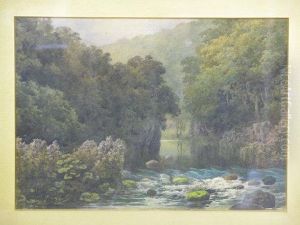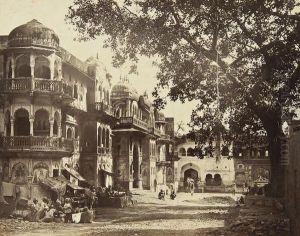Samuel Bourne Paintings
Samuel Bourne was a British photographer known for his work in India. Born on October 30, 1834, in Mucklestone, Staffordshire, England, Bourne originally trained as a banker but developed a strong interest in photography. In the 1850s, photography was still a relatively new medium, and Bourne dedicated himself to mastering the art. His passion for photography grew to the point where he decided to pursue it professionally, a decision that would lead him to become one of the most renowned photographers of his time.
In 1863, Samuel Bourne embarked on a voyage to India, which at the time was under British rule. India's exotic landscapes, majestic architecture, and diverse cultures provided a rich canvas for his photographic work. He traveled extensively throughout the subcontinent, capturing images of famous architectural wonders like the Taj Mahal, the rugged beauty of the Himalayas, and the daily life of Indian people. His works are characterized by their technical excellence, composition, and the ability to convey the grandeur of the scenes he witnessed.
Bourne's photographs were made using the wet-collodion process, which required a portable darkroom, as the photographic plates had to be coated, exposed, and developed on location before the collodion dried. This was a challenging task, especially in the variable and often harsh Indian climate. Despite these difficulties, Bourne managed to produce images of stunning clarity and detail.
In India, Bourne formed a partnership with Charles Shepherd, and together they established Bourne & Shepherd, a photographic studio based in Simla, with branches in Calcutta and Bombay. The studio became one of the most successful and long-lasting establishments, continuing to operate until 2016.
Bourne returned to England in 1870, and after his return, he rarely spoke about his time in India. He settled down in Nottingham and resumed his career in banking, living a life far removed from his adventurous days as a photographer in India. Samuel Bourne died on April 24, 1912. His photographs remain some of the most important records of the landscape and culture of 19th century India, and his work continues to be appreciated for its historical value and artistic merit.

